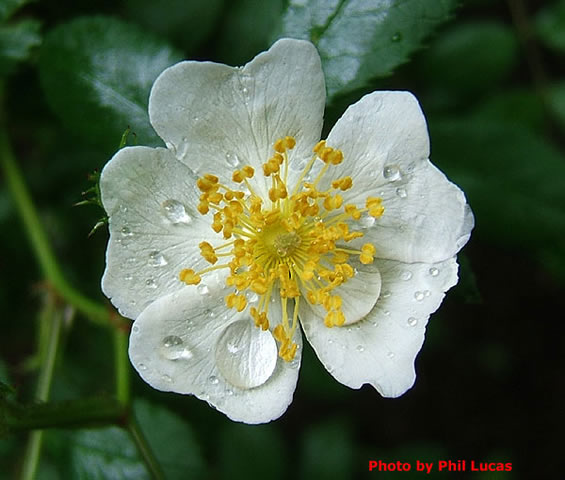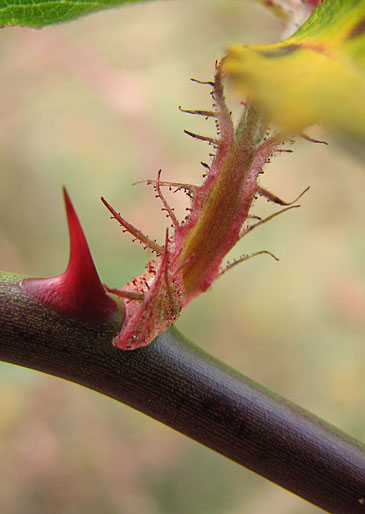BACKGROUND: Multiflora rose was introduced to the East Coast from Japan in 1866 as rootstock for ornamental roses. Beginning in the 1930s, the U.S. Soil Conservation Service promoted it for use in erosion control and as "living fences" to confine livestock. State conservation departments soon discovered value in multiflora rose as wildlife cover for pheasant, bobwhite quail, and cottontail rabbit and as food for songbirds and encouraged its use by distributing rooted cuttings to landowners free of charge. More recently, multiflora rose has been planted in highway median strips to serve as crash barriers and to reduce automobile headlight glare. Its tenacious and unstoppable growth habit was eventually recognized as a problem on pastures and unplowed lands, where it disrupted cattle grazing. For these reasons, multiflora rose is classified as a noxious weed in several states, including Iowa, Ohio, West Virginia, and New Jersey.
Lucas Land
 Multiflora Rose
Multiflora Rose
Rosa multiflora
NATIVE RANGE: Japan, Korea, and eastern China
ECOLOGICAL THREAT: Multiflora rose is extremely prolific and can form impenetrable thickets that exclude native plant species. This exotic rose readily invades most habitats.
